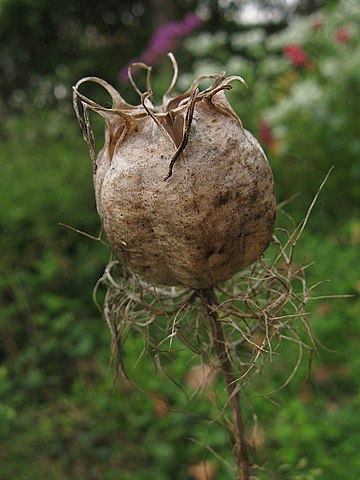
Seeds of Tall Ironweed (Vernonia gigantea), presented to you here because old Pa Pitt was trying out a camera he just bought in a junk shop for $8.

Autumn Clematis (Clematis terniflora) produces great quantities of seeds, which accounts for the fact that we see it more and more in the wild, and that it has been tagged as an invasive species in some places. The seeds themselves are some of the most beautiful constructions in the world of seeds—they look like a school of tropical fish.


Roses of Sharon produce flowers all through the summer and fall, and the flowers each produce a pod of seeds like this. Thus the bush spreads in the city. Its favorite habitat is along fences and among hedges, where the lawn mower won’t get it; in fact, it is very good at taking over entire hedges gradually, until the hedge is nothing but Rose of Sharon. To be fair to the plant, Rose of Sharon makes a very good hedge with very attractive flowers, so you may just want to let it take over.

Love-in-a-Mist, prized for its blue flowers that seem to float in an airy cloud of foliage, grows seedpods that are almost as decorative as the flowers. Children are delighted by the rattling of the seeds in the puffy pods, which make good additions to dried bouquets. The view above is from directly over a pod, showing its hexamerous symmetry.


The ubiquitous Queen Anne’s Lace (Daucus carota) is very decorative in flower, but its seed heads are also picturesque in their way. The umbel of flowers closes up into a something very like a bird’s nest, where hundreds of bristly seeds develop to produce the Queen Anne’s Lace for the year after next (it’s a biennial, so it flowers the second year).